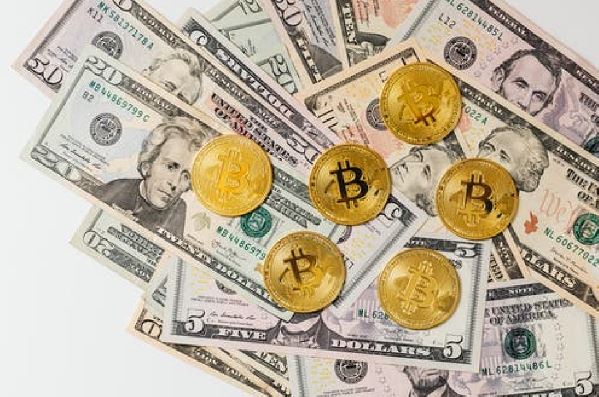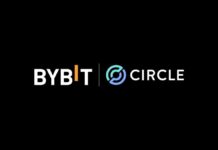
Cryptocurrency is perhaps the most dominant force in commercial, financial regulations, and it runs the market these days. Moreover, cryptocurrencies now hold the same value as any other currency. Its popularity is at its epitome and is reaching new heights.
Cryptocurrencies and blockchains have now become a part of our modern commercial lives. There are so many virtual currencies in digital finance that it becomes difficult for people to discover them intricately. Bitcoin and Ripple are two of the existing cryptocurrencies. These are the most famous cryptocurrency in the world of cryptocurrencies. Its lack of availability is creating havoc among investors and transaction helpers. There are 21 million bitcoins that are available for mining in the digital world. If you want to invest in bitcoin, try the immediate edge app to know more about it.
Ripple ranks fourth in the market’s capitalization and overall adoption rates, whereas Bitcoin ranks first in cryptocurrencies. During its initiation, Ripple started with 100 million coins, as against the 21 million bitcoins.
Before we compare both the cryptocurrencies, let us first understand what a bitcoin is on the one hand and what a ripple is.
What is Bitcoin?
Bitcoin is a network that is primarily known for its ‘Bitcoin cryptocurrency.’ This particular cryptocurrency, which the Bitcoin network operates, is a digital currency to pay for various goods and services. Its transaction efficiency is the thing, which makes it preferable for use in the digital marketing world.
What is a Ripple?
The establishment of Ripple took place, intending to facilitate the functioning of banks and other payment networks. David Schwartz, Jed McCaleb, and Arthur Britto were the three engineers who invested their hard work behind its creation. They wanted to create an alternative for Bitcoin, which would consume less amount of energy and will be way more efficient in its work.
It primarily deals in settling payments, exchanging currencies, and a remittance system for the banks and other networks responsible for conducting transactions.
Ripple’s idea was to provide an efficient system with a more straightforward and complex free transfer of assets like money or gold. Banks consider the structure of Ripple to be much more efficient and hassle-free. The ground of its working is also very secure, with no hovering harm around its transactions. It uses crypto-tokens called XRP, which is also known as ripples, for its sphere of transactions.
Now that we know what bitcoins and ripples are, let us find out the differences that create a margin between the two in terms of usage and efficiency.
1. The usage and the aims
When we discussed what bitcoins and ripples are, we already figured out a primary difference between them. Bitcoin developed as a cryptocurrency to pay for transactions related to goods and services.
Ripple’s birth was to ease banks and various other financial institutions’ working and make the transactions easier and feasible. Settling payments and currency exchanges are figured on the top list of its priorities.
Ripple is comparatively cheaper than bitcoins in terms of transaction expenditures. It is also more hassle-free and straightforward in its working than that of the way bitcoins work.
2. Creation and Development
Bitcoin was supposedly brought to the forefront in 2009 by a mysterious individual with Satoshi Nakamoto’s pseudonym. Bitcoin is the first digital currency of its generation that saw decentralization and was the first to use a distributed ledger with a blockchain.
It is currently being looked after by enthusiastic developers, which shows how decentralized its work management is! It did not helm by any private player, a government, or some bank. It is entirely assertive of its independence from any third-party involvement.
On the other hand, Ripple was born out of the Ripple company with several investors and was sure of its presumptive goals to fulfil. It is a recent company established in the year 2012. The Ripple company had offices in the United Kingdom, Australia, and Luxembourg between 2015 and 2016.
3. Technological Discrepancies
The concept of blockchain is what runs the bitcoin network. It is a public ledger of transactions with verifications and is a reliable arena of record keeping. The miners of the bitcoins are responsible for verifying every transaction conducted in the network. They add the transactions to bitcoins’ blockchain, which serves as a ledger to all the web activities.
To reward them for the timed commitment to their computing power to conduct successful transactions, the bitcoin miners get rewards in BTC. They earn BTCs for a stipulated quantity of successful transactions they execute.
On the other hand, the digital network of payment and protocols makes XRP a famous technology in digital currencies. Besides the functioning of XRP as a crypto coin, Ripple is more efficient in conducting transactions and settling payments than bitcoins. It works like SWIFT, which is a service provided for international money and security transfers. It is under usage by a network of banks and various other financial intermediaries.
4. Mining and Circulation Rewards
Bitcoin uses the work of a proof system. It has to mine out all the available BTCs because it forms an essential part of the validation process. The miners get a reward in terms of a Bitcoin on unravelling a blockchain.
On the other hand, all the XRP coins, i.e. ripples, are already mined beforehand. Therefore, they do not require any mining like bitcoin does.
How the crypto coins are released in the channel differs for BTCs and XRPs. The miners find the bitcoins. On introducing the crypto coins, they automatically add to the network. Concerning the XRPs, a smart contract controls its release into the network channel.
About the mining activities, we already know that a maximum of 21 million bitcoins is available. On the contrary, Ripples release a total of 1 billion XRP crypto tokens each month. An inbuilt smart contract governs its release into the mainstream. If there are any unused XRPs in the system for the concerned month, an escrow account is there to revert them into its storage.
This particular method ensures that no one can misuse the excess amount of crypto coins left in the network and take a lot more years to make use of all the coins.
5. Transaction Charges
Just like bitcoins have a transaction fee, Ripples also have a price for every XRP transaction. A small amount of XRP is chargeable, and every time Ripple performs a transaction in its network. Ripples have a similar procedure for charging XRPs for commerce, just like bitcoins are set for the transactions on the other end.
The charges of transactions issued for bitcoins are comparatively higher than that of Ripples. Every bitcoin transaction costs an individual around $40, whereas Ripples’ transaction charges amount to $0.004 per transaction.
6. Speed of Transactions
In this particular aspect, Ripples take a comfortable lead over bitcoins. Take a note that Bitcoin takes around 10 minutes on average for every transaction in its network, whereas Ripples take just 5 seconds!
7. Real World Utilizations
Individuals and various organizations increasingly use Bitcoins as a virtual currency. It has the same relevance as money and is used in the same capacity. On the other hand, Ripple uses XRP crypto coins to transfer different currencies and commodities in society such as Gold, Petrol, etc.
While we notice the fact that bitcoin is a centralized currency exchange, Ripple is a highly decentralized system of exchange of currencies. It reflects the fact that the users of Ripple intend to change the XRP crypto coins into USD. It is possible to complete the procedure within the company’s network without any outside interference or third-party involvement.
Ripple has more than 200 financial institutions under its purview and has a network spread over 40 countries. It facilitates cross-border currency flows among various countries.
Ripple continues to see a massive surge in its demands among various financial institutions and banks. Many such institutions want to facilitate the flow of their transactions via Ripple. It is way ahead of many of its competitors in the space of digital currency.
By now, you must have understood what Bitcoin and Ripple are. Bitcoin provides an alternative decentralized currency that has purchasing power. It is a speculative investment.
Ripple facilitates the payments between the banks from different governments, as in inter-state. Just like Bitcoin, it is also under the banner of speculative investment.
We hope to clear the fog around the differences between Bitcoin and Ripple with the above explanation. We wish that you make suitable investments in the field of cryptocurrencies and reap fruitful profits. All the best for your endeavours!
[newsletter_form lists="1"]










